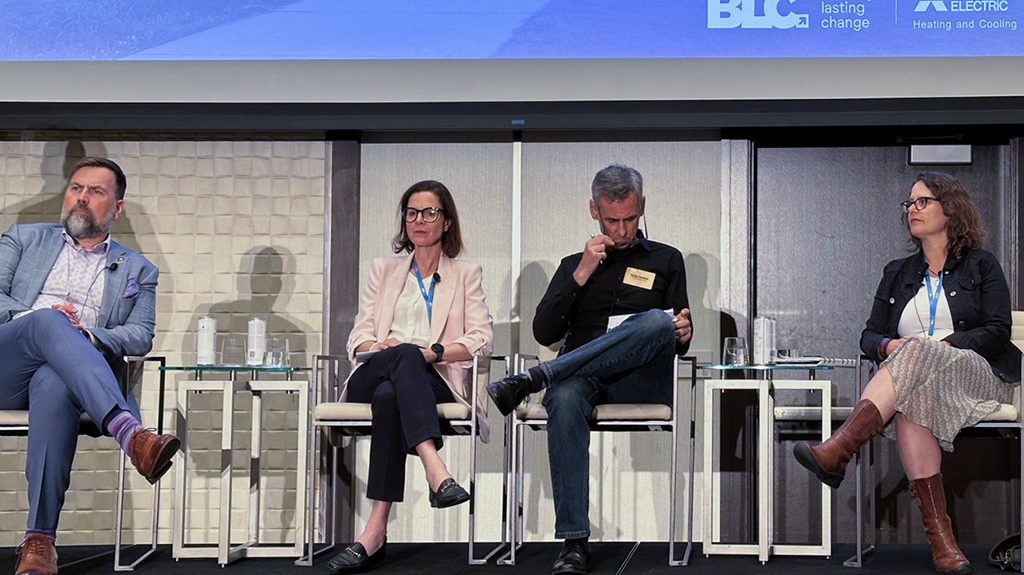Green building isn’t going anywhere but it is adapting to a shifting policy landscape.
Sustainability thought leaders examined new green building priorities in a chaotic policy environment at the Canada Green Building Council’s (CAGBC) Building Lasting Change conference held earlier this month in Vancouver.
CAGBC chief commercial officer Brent Gilmour moderated a panel titled, Building Resilience in a Changing Policy Environment, featuring Perkins&Will principal and regional director of regenerative design Kathy Wardle, City of Vancouver manager of green and resilient buildings Sean Pander, and BC Hydro manager of market transformation Robyn Wark.
Gilmour asked the panellists how government and industry can better align market tools with policy, and Pander said in the case of the City of Vancouver it involved “innovating in the same direction.”
“We’re trying to take advantage of the drive for every building not needing to be bespoke,” Pander said. “How can we look at mass timber buildings and create standards, rather than trying to redesign?”
Wardle said Perkins&Will has designed more than 15,000 units in the Lower Mainland and continually asks “how to design homes in a stable way that’s environmentally friendly and responsible, but also socially sustainable.”
Working with a $250,000 investment grant from the provincial government, she said, the company has embarked on a research program to “focus on advancing housing in B.C, but also designing mass timber, prefabricated units that can scale.
“Our research isn’t complete, but the hope is we’re getting smarter about our unit design and how to scale up not only in B.C., but across Canada,” she said. “If we’re going to deliver across Canada, these homes have to be healthy, resilient, and smart.”
Wark said while BC Hydro prioritizes energy efficiency, affordability was the primary focus for all the stakeholders involved in creating the BC Step Code, which charts out the path to net-zero energy ready buildings by the 2030s.
“We know we can build better buildings, but it’s a change management issue,” she said.
“Incentives given project by project are not changing the market. It’s probably giving money to people who would do it anyway.”
Wardle said despite a recent policy drift in the United States away from environmental and equity-based goals, clients are still concerned with meeting those standards.
“We’ve had multiple clients call up in a bit of panic saying their equity partners want to know how (designs) will meet their carbon and ESG goals,” she said. “You should understand who your client is and what their pain points are.”
Gilmour also noted while industry and government have gathered a surfeit of project data, pulling meaning from the numbers has been a challenge.
Pander said the City of Vancouver looks at larger buildings with more sophisticated equipment, examines how those systems interact and tries to build standards from that data.
“We want to give flexibility for the owners, to do what works for their building,” he said. “You want to see wins, go where industry is confident and provide a horizon for them to do the work.”
He said while the city doesn’t publish their data they do have a building-level anonymized database so it can be sorted at the individual building level.
Gilmour added while data has been discussed for 25 years, not every province, city and regulator is in the same place at the same time.
“It’s a moving target and some won’t be ready for some time,” he said.




Recent Comments
comments for this post are closed